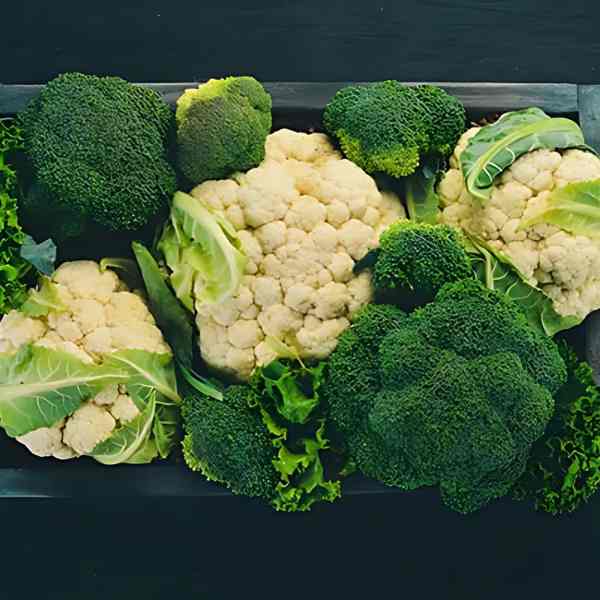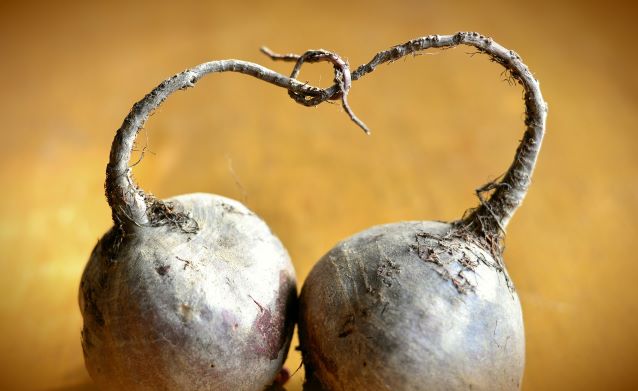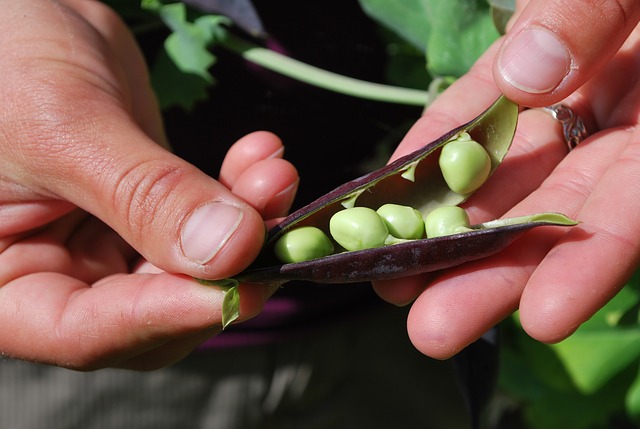The Ultimate Guide To Brassicas

Brassicas are the unsung heroes of the vegetable world. From the humble cabbage to the trendy kale, these hardy plants have fed civilizations, adapted to diverse climates, and evolved into an astonishing array of forms.
Whether you’re a seasoned gardener or a curious newbie, this guide will walk you through everything you need to know about brassicas—their rich history, the best varieties for Australian conditions, and practical tips to grow them successfully.
The History of Brassicas
Brassicas trace their roots to the wild mustard plant (Brassica oleracea), a scrappy Mediterranean native with bitter leaves and tiny yellow flowers. Over thousands of years, humans transformed this unassuming plant into a culinary dynasty through selective breeding.
The secret to brassicas’ diversity lies in selective breeding. By saving seeds from plants with desirable traits—like larger leaves, tighter heads, or sweeter flavours—farmers gradually shaped wild mustard into today’s kale, cauliflower, Asian greens, Brussels sprouts, and more.
For example:
- Cabbage emerged from selecting plants with dense terminal buds.
- Broccoli and cauliflower were bred for their oversized flower heads.
- Kale owes its existence to plants with the most robust leaves.
This process, distinct from genetic modification, relies on natural crosspollination and patience. It’s a testament to human ingenuity—and a reminder that every bite of coleslaw or roasted Brussels sprouts is a taste of history.
Brassica Varieties
Brassicas thrive in Australia’s varied climates, from Tasmania’s frosty winters to Queensland’s humid summers. Here’s a breakdown of the most popular varieties grown and their unique traits:
1. The Classics
- Broccoli: A cool season staple, broccoli produces tight green heads in 16–22 weeks.
- Cauliflower: Known for its creamy white heads, modern cultivars like Snowball and purple varieties offer year round growing potential.
- Cabbage: From sweet Vertus Savoy to vibrant Red Acre, cabbages are versatile for salads, ferments, and soups.
- Kale: Dubbed a “superfood,” Black Tuscan and Red Russian kale thrive in cooler months and tolerate light frost.
2. Asian Greens
Quick growing and flavourful, these brassicas are perfect for small spaces:
- Bok Choy and Pak Choy: Crisp stems and tender leaves ideal for stir fries.
- Mizuna: Mild, frilly leaves for salads.
- Tatsoi: A spoon shaped green that tolerates partial shade.
3. Niche Stars
- Romanesco Broccoli: A fractal patterned head with a nutty flavour.
- Kohlrabi: A bulbous stem that tastes like a sweet, crunchy turnip.
- Brussels Sprouts: Best sown in late spring for winter harvests. Pro tip: Prune lower leaves to boost sprout growth.
Growing Brassicas: A Step by Step Guide
Brassicas are hardy but demand attention to detail. Here’s how to cultivate a thriving crop:
Soil Preparation
- Enrich the soil: Brassicas are heavy feeders. Mix compost or well rotted manure into beds 2–3 weeks before planting.
- pH balance: Aim for slightly acidic soil (pH 6.0–7.0). Lime can adjust acidity if needed.
- Drainage: Avoid waterlogged soil—raised beds work wonders in rainy regions.
Sowing Seeds – Direct Sowing v Starting in Trays
When it comes to starting these hardy plants, gardeners often debate: is it better to sow seeds directly into the ground or raise seedlings in trays first? Let’s dig into both methods, no fluff, just dirt-under-the-nails facts.
Method 1: Direct Planting
How it’s done:
- Prepare the soil: Loosen to 30cm depth, mix in compost, and rake smooth.
- Sow seeds: Plant 1cm deep, spacing 30–50cm apart (check seed packet specifics).
- Water gently: Keep soil moist, not waterlogged.
- Thin seedlings: Once they have 2–3 true leaves, remove weaker plants to avoid crowding.
Pros:
- No transplant shock: Roots grow undisturbed, building resilience.
- Less work: Skip potting, hardening off, and transplanting.
- Space-efficient: Great for large gardens.
Cons:
- Pest vulnerability: Cabbage moths, slugs, and birds love tender seedlings. Use netting or cloches.
- Weather risks: Heavy rain or heatwaves can ruin germination.
- Slower start: Seeds take longer to establish than transplants.
Method 2: Starting in Trays
How it’s done:
- Choose trays: Use cell trays or small pots with drainage holes.
- Sow seeds: 1cm deep in quality seed-raising mix. Keep moist.
- Grow indoors or in shelter: Place in a bright, warm spot (18–25°C).
- Harden off: Acclimate seedlings to outdoor conditions over 7–10 days.
- Transplant: When seedlings have 4–6 true leaves, plant out on a cloudy day.
Pros:
- Control: Manage temperature, moisture, and pests early on.
- Head start: Begin seeds indoors 4–6 weeks before planting out.
- Higher success: Less seed waste and better germination rates.
Cons:
- Transplant shock: Roots can struggle if not handled gently.
- More effort: Requires time, space, and extra supplies.
- Timing risks: Transplant too early, and frost may damage plants; too late, and roots get pot-bound.
The Verdict: Which Method Wins?
Neither method is “better”—it’s about your garden’s context:
- Choose direct sowing if: You’ve got space, time, and a handle on pests.
- Choose trays if: You’re juggling weather extremes, want earlier harvests, or need to dodge pests.
Pro tip: Experiment! Try both methods with a fast-growing variety like kale or bok choy. Track what works best in your patch.
Pest & Disease Management
Brassicas attract pests like cabbage moths and aphids. In fact they are a very popular group of vegies to the insect world. Stay vigilant:
- Netting: Drape fine mesh over crops to block butterflies. Ensure nets don’t touch leaves.
- Organic controls: Spray with Bacillus thuringiensis, Dipel, for caterpillars. For aphids, try a soap spray.
- Diseases: Rotate crops yearly to prevent soilborne issues like clubroot. Treat fungal infections (e.g., downy mildew) with copper based sprays.
Watering & Feeding
Consistent moisture: Water at the base to keep leaves dry. Mulch with sugarcane or straw to retain moisture.
Fertilising: Feed every 1–2 weeks with a nitrogen rich fertiliser.
Harvesting
Broccoli/Cauliflower: Cut heads when tight and compact.
Leafy greens (kale, mizuna): Pick outer leaves regularly to encourage growth.
Brussels sprouts: Harvest from the bottom up as sprouts firm up.
Useful Facts & Tips
- Seed Longevity: Brassica seeds remain viable for up to 5 years if stored in cool, dry conditions.
- Mechanical Harvesting: Commercial growers prioritize broccoli varieties with taller stems for easier machine harvesting.
- Nutrition Powerhouse: Brassicas are rich in vitamins C and K, fibre, and cancer fighting glucosinolates.
- Decoy Tactics: Hang white butterfly shaped decoys to deter cabbage moths—they’re territorial!.
- Bolting Prevention: Sudden heat or drought triggers premature flowering. Keep soil moist and shade plants in heatwaves.
Conclusion: Why Brassicas Belong in Your Garden
Brassicas are more than just vegetables—they’re a bridge between ancient agriculture and modern gardening. With their adaptability, nutritional value, and sheer variety, they offer something for every Aussie gardener. Whether you’re experimenting with purple cauliflower or nurturing a row of classic broccoli, these plants reward patience and care with bountiful harvests.
Ready to start? Explore our curated selection of brassica seeds, and join the tradition of growers who’ve shaped this remarkable family for millennia. Happy gardening!
References: Insights sourced from industry experts, seed trials, and Australian horticultural resources.
https://ausveg.com.au/knowledgehub/brassicavarietiescontinuetoevolve
https://www.yates.com.au/gardenhub/howtogrowbrassicascrucifers





